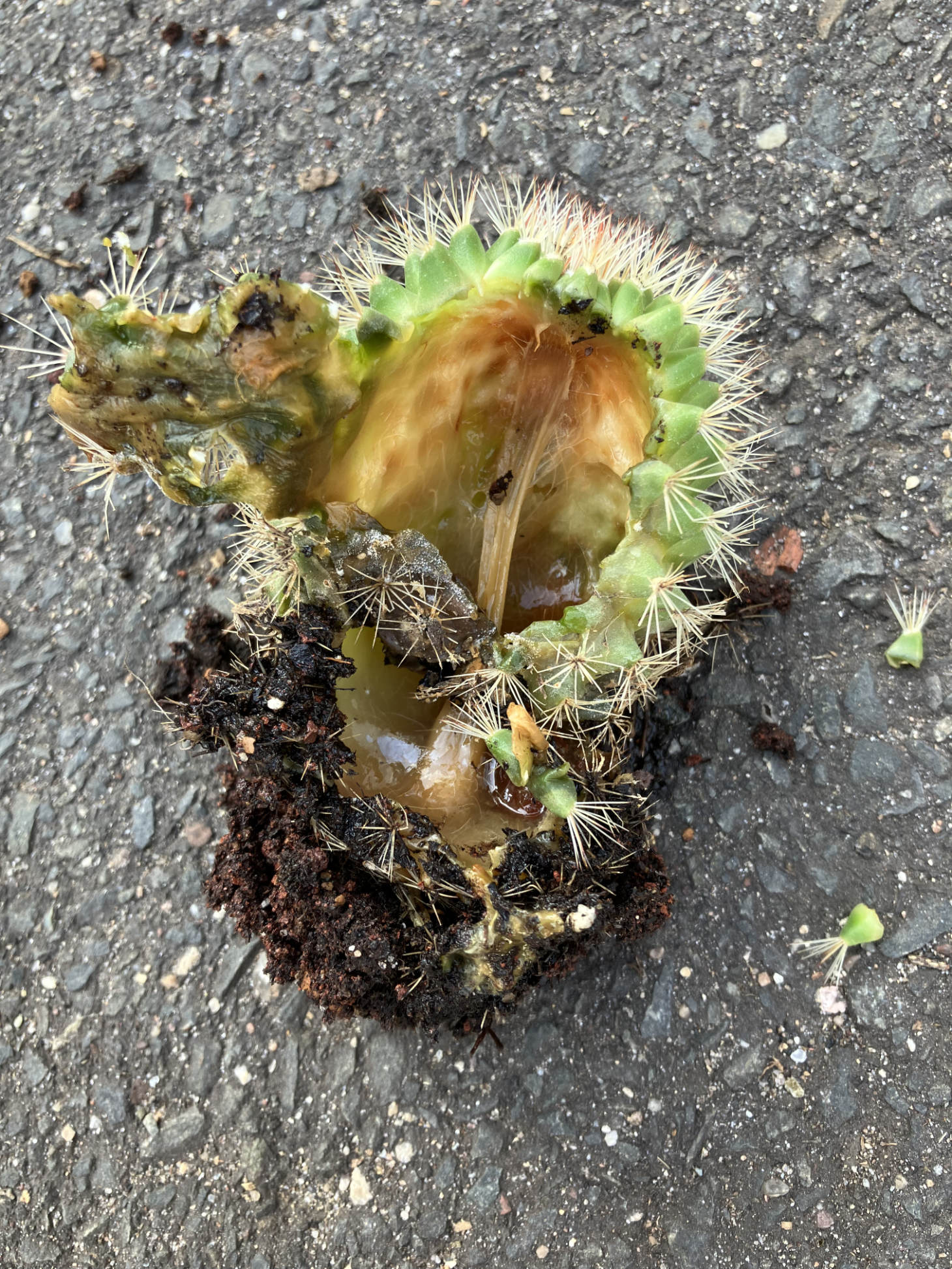Cactus Root Rot: Identifying and Preventing Damage
Cactus root rot is a common problem that can affect even the most well-tended plants. When the roots of a cactus become soft, mushy, or start to smell, it’s a sign of root rot, often caused by overwatering or poor drainage. The base may turn yellow or brown, and the plant might begin to wilt. Catching it early is crucial to saving your plant.
To prevent cactus root rot, ensure you are using a pot with good drainage and avoid letting the plant sit in water. Cacti need soil that dries out completely between waterings. If your cactus shows signs of rot, you may need to act fast by replanting it in fresh soil and trimming away any affected roots.
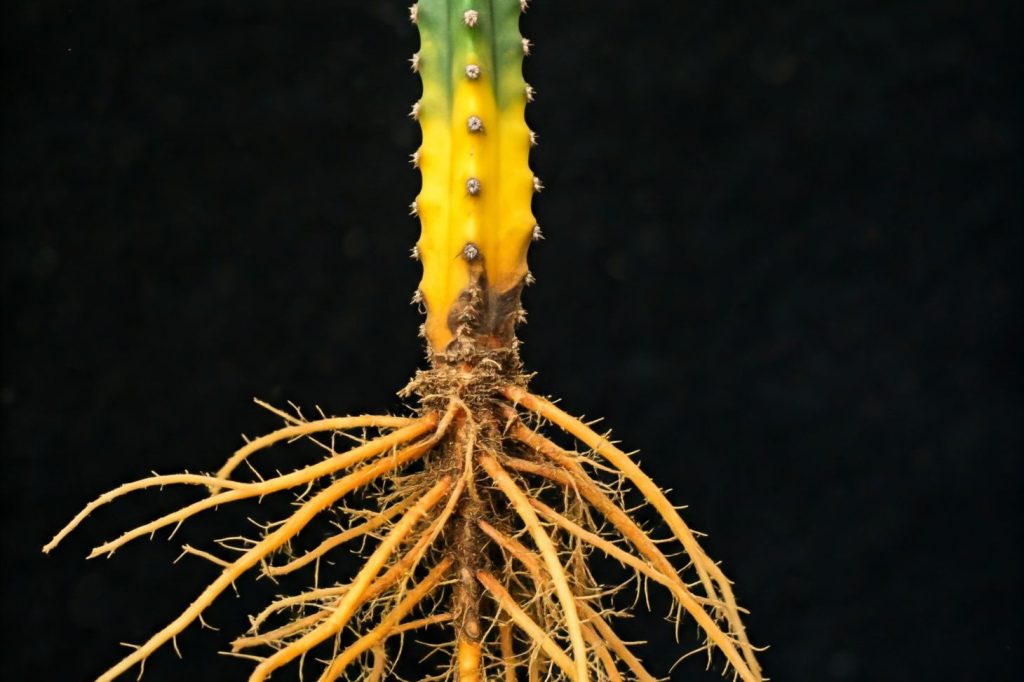
If your plant is already suffering from root rot, cutting the damaged roots and providing the right conditions for new growth is essential. With proper care and quick action, your cactus has a chance to recover fully and continue to thrive.
Key Takeaways
- Root rot signs include soft roots and base discoloration.
- Use proper drainage and soil that dries out between waterings.
- Trim affected roots to help the cactus recover.
Understanding Cactus Root Rot
Cactus root rot can severely harm your cactus plants, often linked to problems like overwatering, poor soil conditions, and infestations. Recognizing symptoms and causes early can help protect your plants.
Causes of Root Rot
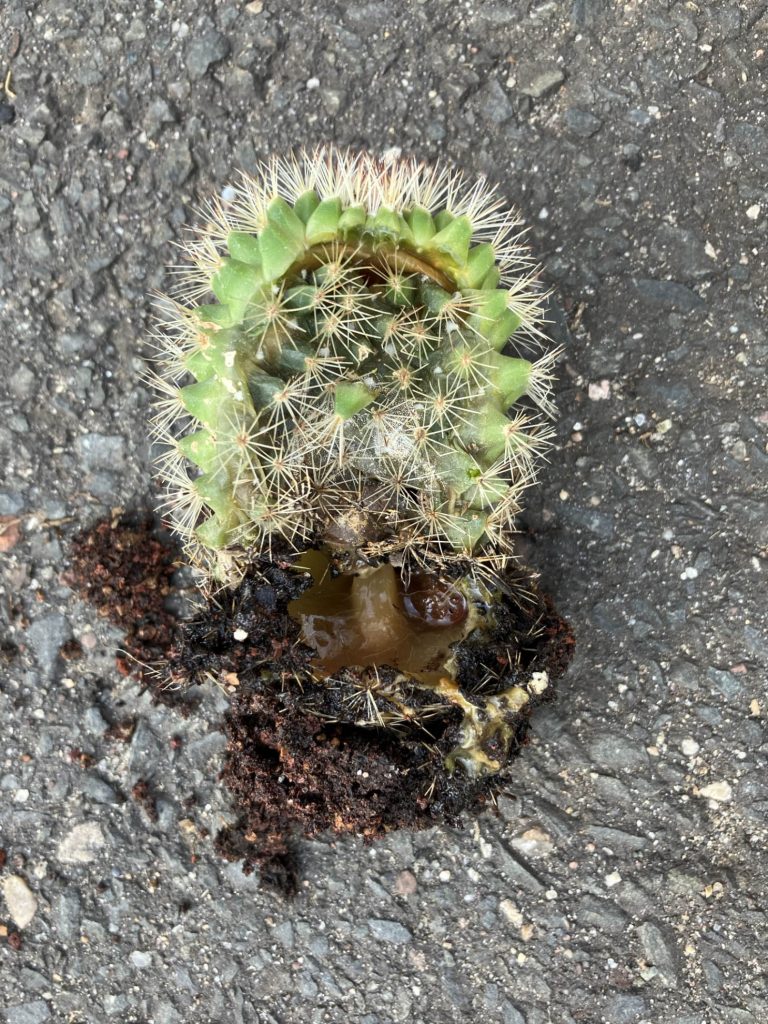
Root rot in cacti primarily arises from overwatering, leading to overly moist conditions. This moisture promotes the growth of harmful fungi such as fusarium and other pathogens.
Using pots that lack drainage holes can worsen the situation by trapping water, increasing the likelihood of rot. Selecting well-draining soil is also crucial. If the soil holds too much moisture, it creates an environment where rot can thrive, endangering your cactus.
Identifying Symptoms in Cacti
Symptoms of root rot include yellowing, a mushy texture, and foul smells from the cactus. Early detection is vital as these signs indicate severe distress.
Look for swollen cactus segments, which suggest water is being absorbed faster than it can be transpired. As the rot progresses, these symptoms may worsen, leading to potential plant death if not addressed promptly.
Pathogens and Pests
Various pathogens and pests can trigger or exacerbate root rot. Key pathogens include fungi like fusarium, which thrive in waterlogged conditions.
Some pests also contribute to root rot. Tiny insects can burrow into cactus tissue, spreading pathogens or causing physical damage. This creates entry points for harmful organisms, making pest control an essential part of prevention.
Preventative Measures and Proper Care
Cactus root rot can be avoided with careful attention to how you water your cactus, the type of soil you use, and the pot you choose.
Appropriate Watering Techniques
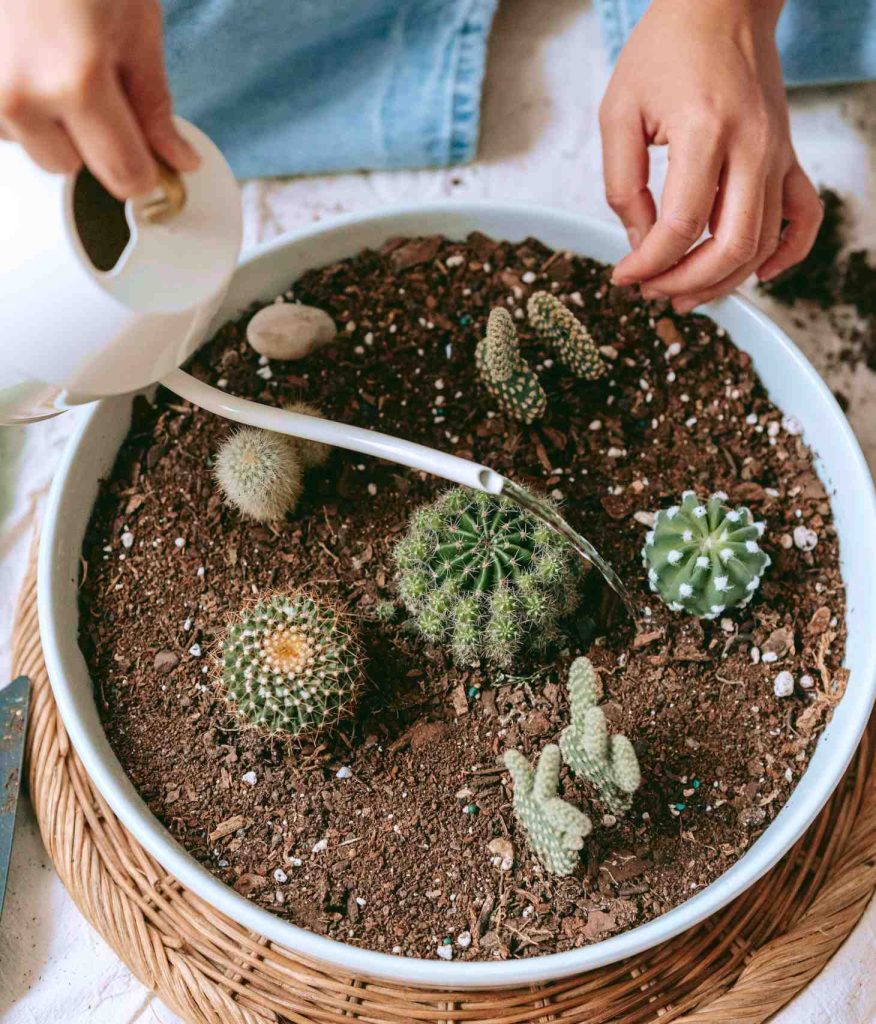
Watering your cactus properly is crucial in preventing root rot. You should water your cactus only when the soil is completely dry. Overwatering is a common mistake that leads to rot. It’s better to underwater than overwater a cactus. During its growing season, like spring and summer, your cactus might need more frequent watering compared to the dormant months in fall and winter.
One simple tip is to use a moisture meter or insert your finger or stick into the soil to ensure dryness before watering. Always water thoroughly, allowing the water to drain from the bottom. This helps keep the roots healthy and prevents water from sitting.
Soil and Drainage Essentials

The right soil is vital for keeping your cactus healthy. Cacti require well-draining soil to prevent excess water retention. While a commercial cactus or succulent mix might seem like the obvious choice, the reality is that most of these mixes are not well-draining enough for optimal cactus health. Unfortunately your typical “cactus soil” is quite often regular potting soil and loaded with way too much peat moss.
Avoid regular garden soil that holds water for too long. You can make your own cactus mix by combining parts of potting soil, perlite, and coarse sand.
However, for guaranteed success and convenience, consider our specially formulated cactus soil mix. It is expertly crafted to prevent root rot and provide the perfect environment for your cacti to thrive.
Pot Selection for Healthy Cacti
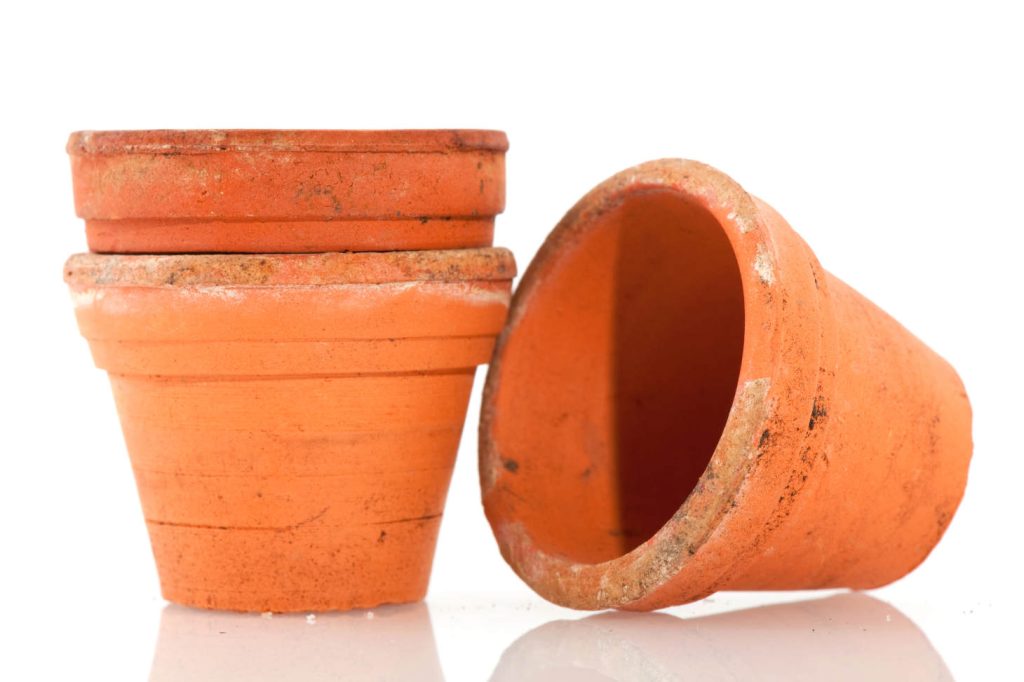
Choosing the right pot can greatly influence your cactus’s health. Opt for one with drainage holes at the bottom, which allows excess water to escape. This prevents water from accumulating and causing root rot.
The material of the pot is also important. Clay or terracotta pots are great choices because they are porous and promote air circulation, helping the soil dry faster. Ensure the pot size matches your cactus’ size; too large a pot means too much soil, which could retain moisture longer than preferred.
Treatment and Recovery
When dealing with cactus root rot, prompt and effective treatment is crucial. Removing infected parts and ensuring proper care afterward can help your cactus recover and thrive.
Treating Infected Cactus Roots
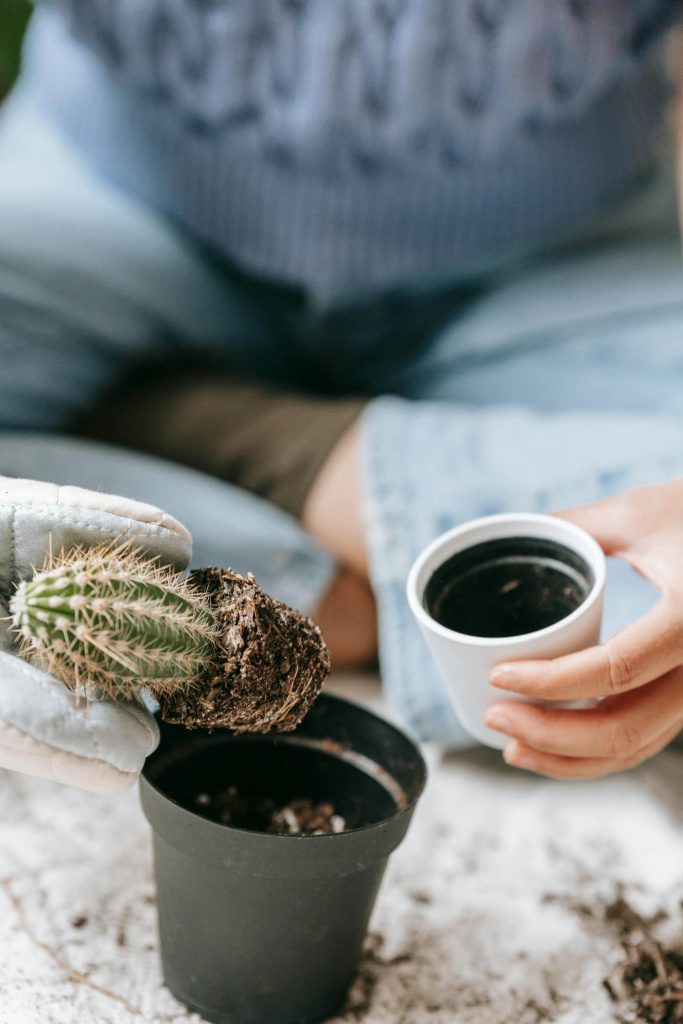
Begin by carefully removing your cactus from its pot. Shake off excess soil and examine the roots. Look for soft, black, or foul-smelling roots, which indicate rot. Use clean, sharp scissors to cut away the rot.
It’s important to remove all infected parts to prevent the spread of rot. You may dust the healthy roots with cinnamon or charcoal powder to help fight off any remaining rot. Allow the cut areas to dry for for several days in a bright, airy location, but avoid direct sunlight. This drying period helps the cuts heal before repotting.
Aftercare Following Treatment
Replant your cactus in fresh, well-draining soil, such as a mix designed for cactus plants. Use a pot with drainage holes to prevent water from pooling at the bottom. Water sparingly, allowing the soil to dry out completely between waterings, especially in the early stages of recovery.
Place the cactus in a location with adequate sunlight, but not direct intense exposure to prevent stress. Monitor the plant closely for the first few weeks. If you notice any new signs of rot, act quickly, repeating the treatment process if necessary. Maintaining good airflow around the cactus is also important to support recovery and prevent future issues.

